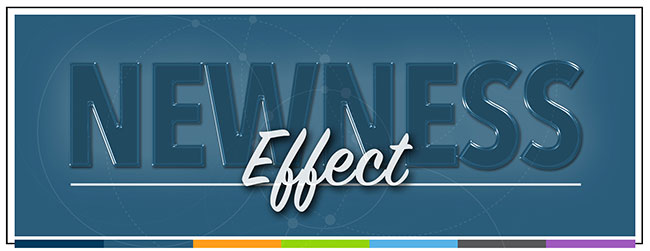SPONSORED
How to inspire excitement with consumers, enhance your brand image and create greater product success
By Dave Lundahl, CEO and Founder, InsightsNow
 In today’s world, consumers are seeking “newness” all the time, looking for something on which to take action (especially after a long period of limited action). In a saturated market, new products create excitement among target consumer groups. Consumers have so many choices it is important for consumer product companies to know how to cut through the clutter with a new or updated product.
In today’s world, consumers are seeking “newness” all the time, looking for something on which to take action (especially after a long period of limited action). In a saturated market, new products create excitement among target consumer groups. Consumers have so many choices it is important for consumer product companies to know how to cut through the clutter with a new or updated product.
Newness is also essential for the brand itself and the perception of the brand. Brands that are perceived as innovative and trendsetting are the most disruptive in the marketplace and are gaining the most market share.
This focus on “newness” is twofold:
- Newness answers the need for new products that create excitement in consumer choice.
- Newness can be used to create positive brand perception and trust.
So how do you gain the insights needed to make sure your product and brand have this edge? You enhance your marketing and consumer research techniques to include true behavioral metrics that give deep understanding of real consumer behavior and what you can do to disrupt current behaviors.
We must go deeper to understand what drives disruption. To understand newness in relation to products in the marketplace, researchers must look at the brand, brand promise, product innovation and product delivery through the lens of human behavior. Are all of these aspects working together to deliver the reward and emotional impact that consumers are looking for?
The newness effect
What we call “the newness effect” is an advancement in behavioral market research that connects the dots between implicit emotional impact and behavioral disruption of consumers. This is used when an existing product is updated or changed or a brand-new product is introduced that would cause a target consumer to choose the changed or new product over one they had routinely chosen in the past.
Category lift predictions
The ability to predict how a new product will disrupt behavior of individual consumers, disrupt a product category and reinforce brand image is a powerful decision tool. The newness effect focuses on a set of metrics that can be used to gauge and predict category lift – a measure of how a new product disrupts a whole product category and a way to evaluate brand impact. We use implicit techniques to produce these metrics. By identifying the product design or concept that can generate the greatest emotional impact and perceived benefit with consumers, brands are able to drive choice over category competitors.
Using implicit testing
The newness effect leads to new insights by using behavioral measures of trust, relevance, uniqueness and emotional (TRUE) impact. Measurement is done through InsightsNow’s Implicit/Explicit Test™. The Implicit/Explicit Test is a patent-pending approach to assess whether each person’s reaction is implicit or explicit – and in which direction. It is unique in that it provides a calibrated classification for each person each time they complete the test, and it is especially useful to newness as it shows when consumer disruption occurs. This approach lets you see the exact percentage of people who are reacting in a certain manner, illuminating a quantifiable route to move forward in the best way possible with products, projects and plans.
Trust, relevance, uniqueness and emotional (TRUE) impact
- Trust: Brand trust and brand perception are important aspects to understand when creating a new product or planning existing product innovation for disruption. Using the Implicit/Explicit Test, brands measure positive and negative responses to trust questions that dig into the subconscious of their customers to determine whether product updates or new products will support the brand.
- Relevance: Are your products and product claims relevant? Once again, researchers apply the Implicit/Explicit Test to get metrics for relevance by employing testing to look at every single claim across the whole category for their product. For example, when consumers quickly answer “yes,” the implicit score indicates a high level of implicit relevance of the product or claim presented, and this high level is more likely to nudge an existing habit. Conversely a high percentage of people with slower responses indicates more disruption, which is important to newness if your goal is to get people to stop and reconsider their choices.
- Uniqueness: Are your products or claims unique to the product category? Once again, by gathering data from across the category and testing consumers’ responses, you arrive at a metric that allows you to create a product or a claim that will stand out in the category, and you make sure it supports your brand.
- Emotional: At InsightsNow, we use a four-step process to measure implicit emotional reactions. First, respondents project their emotions to a contextual image that captures their feelings about the product. They explain why the image is a good metaphor, then describe the image in their own words. (Image metaphors provide a highly repeatable way to report feelings.) Finally, the Implicit/Explicit Test connects emotions to the image, resulting in an implicit emotions score used to identify if you are delivering a spike in positive disruptive emotions.
The newness effect uses all the metrics gathered from these four key categories along with an incremental set of category choice activities to understand the potential for category lift – the amount of category share your new product can take by disrupting consumer behavior.
Implementing for success
Because the newness effect provides measurement of human behavior, you can use the data to create new, disruptive products appealing directly to subconscious emotions and driving choice. The approach includes discovering opportunities within the product category for disruption and exploring what claims will resonate as new and trendsetting – the category lift. The newness effect also looks at the behavioral impact of product experience on the perception of the brand and the behavioral impact of marketing messaging and advertisement to impact awareness and to drive trial.
More than ever before, consumers are searching for the next best thing. The limited “action” during the pandemic, coupled with a drive to eliminate boredom, has resulted in consumers seeking out products and brands that are staying on the cutting edge. Brands that leverage newness well are the ones that will see disruption and success. To learn more about applying the newness effect to your next innovation, visit: www.insightsnow.com/newnesseffect.

 info@insightsnow.com
info@insightsnow.com